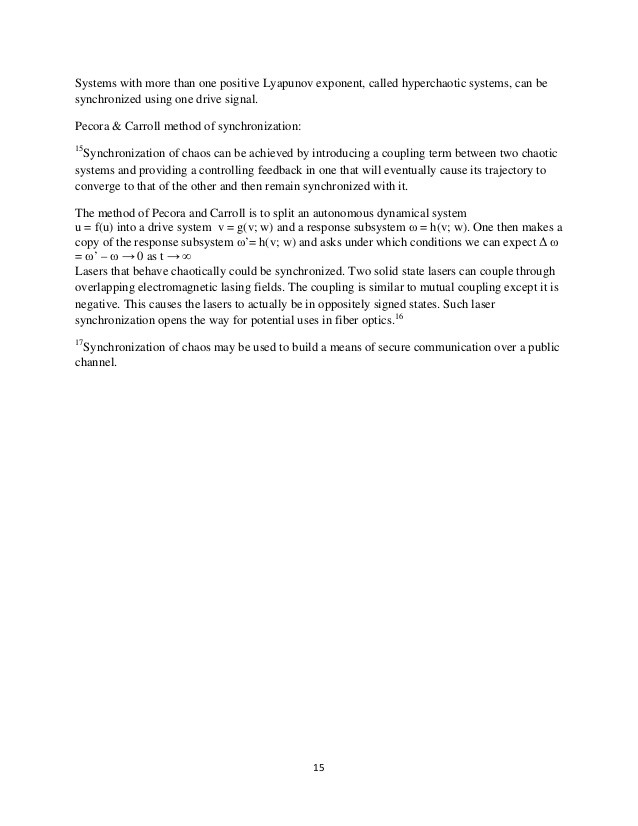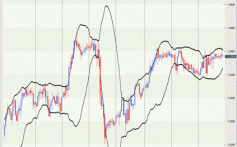Chaos Theory and Market Reality Part One
Post on: 16 Март, 2015 No Comment

Chaos Theory and Market Reality, Part One
When a new trader examines the trading problem, his first reaction is that in order to be successful, he must learn to predict the markets. Minimum research will teach him that you use fundamental analysis to make long-term predictions and technical analysis to make short-term predictions. If our new trader examines commodity market price history, he finds what appear to be repetitive patterns. Over the long term, the markets move up and down in broad cyclic waves. If he looks carefully, he can find certain short-term chart patterns that occur over and over. Once he discovers the world of mathematical indicators, he finds that certain configurations of the indicators and price patterns repeat themselves—often at major tops and bottoms.
At the same time as he is discovering these repetitive patterns of various types, he is also learning to appreciate the incredible profits that are possible if one takes action at the right time.
It should not be surprising that our eager beginner concludes that the markets are entities that keep repeating themselves over and over in various ways. If he or she can learn the patterns and cycles, large profits should be easy. Maybe the markets are so organized that they repeat themselves perfectly over and over in a highly disguised way. If our trader can crack this secret code, not only will huge profits be possible, he or she can eliminate almost all losses.
Our trader pursues these goals using the available literature. Profits are usually elusive. Eventually, the mail brings offers of special systems that do in fact take advantage of these patterns known only by a select group of insiders. Since these systems are often priced in the thousands of dollars, our trader assumes they must in fact be valuable trading tools. These system brochures often contain stories of legendary or reclusive traders who discovered secrets of the markets and made millions. Through various means, the seller has acquired these secrets which he now agrees to share with only a few lucky traders. These stories reinforce the belief that the few traders who are making the big money are successful because they have discovered something about market behavior that only the insider super traders know.
In spite of the abundance of such prediction methods in books, systems and software, during any given year about 75 percent of commodity traders lose money. In the long run, probably 95 percent of traders lose. Nevertheless, almost no traders question the proposition that exploitable, repetitive price patterns exist. We saw a recent article titled The Magic of Charting Price Patterns and Projections. There was nothing in the article itself that showed any performance, much less magic.
People are naturally susceptible to wishful thinking. They believe what they want to believe in spite of obvious evidence to the contrary. Short-term luck causes many such faithful traders to reinforce their invalid beliefs. In a recent interview, I was asked what is the greatest skill a trader can possess or develop. My answer was as follows: There are obviously a number of different skills that a trader needs in order to be successful. They are all important. If I had to to pick just one that is most important, I would say it is the ability to perceive true reality.
Unsuccessful traders have a distorted view of the markets, themselves and what they are really doing when they trade. It is very difficult for them to shed these misconceptions so they are doomed to
long-term failure.
The whole market universe is constructed in a way that reinforces their misconceptions. This compounds the challenge of overcoming them.
Enter Chaos Theory. It turns out that it is possible to examine historical market price action with mathematical and statistical tools and determine whether such repetitive patterns and cycles exist.

According to respected authorities, the markets are non-linear, dynamic systems. Chaos Theory is the mathematics of analyzing such non-linear, dynamic systems. Chaos analysis has determined that market prices are highly random with a trend component. The amount of the trend component varies from market to market and from time frame to time frame. A concept involved in chaotic systems is fractals. Fractals are objects which are self-similar in the sense that the individual parts are related to the whole. A popular example is a tree. While the branches get smaller and smaller, each is similar in structure to the larger branches and the tree as a whole. Similarly, in market price action, as you look at monthly, weekly, daily and intraday bar charts, the structure has a similar appearance. Just as with natural objects, as you move in closer and closer, you see more and more detail.
Another characteristic of chaotic markets is called sensitive dependence on initial conditions. This is what makes dynamic market systems so difficult to predict. Because we cannot accurately describe the current situation and because errors in description are infinitely compounded in the future by the systems overall complexity, accurate prediction becomes impossible. Even if we could predict tomorrows stock market change exactly (which we cant), we would still have zero accuracy trying to predict only 20 days ahead.
A number of thoughtful traders and experts have suggested that those trading with intraday data such as five-minute bar charts are trading random noise and thus wasting their time. Over time, they are doomed to failure by the costs of trading. At the same time these experts say that longer-term price action is not random. Traders can succeed trading from daily or weekly charts if they follow trends. The question naturally arises how can short-term data be random and longer-term data be deterministic in the same market. If short-term (random) data accumulates to form long-term data, wouldnt that also have to be random?
As it turns out, such a paradox can exist. A system can be random in the short-term and deterministic in the long-term. The trachea in human lungs are an example in nature of just such a system. For those willing to plod through some fairly technical, jargon-loaded language, I recommend Edgar Peters two books on Chaos Theory and the markets, Chaos and Order in the Capital Markets (992) and
Fractal Market Analysis (1994). Both are published by John Wiley & Sons.
In my next article I will explore this subject further and suggest some practical applications.














